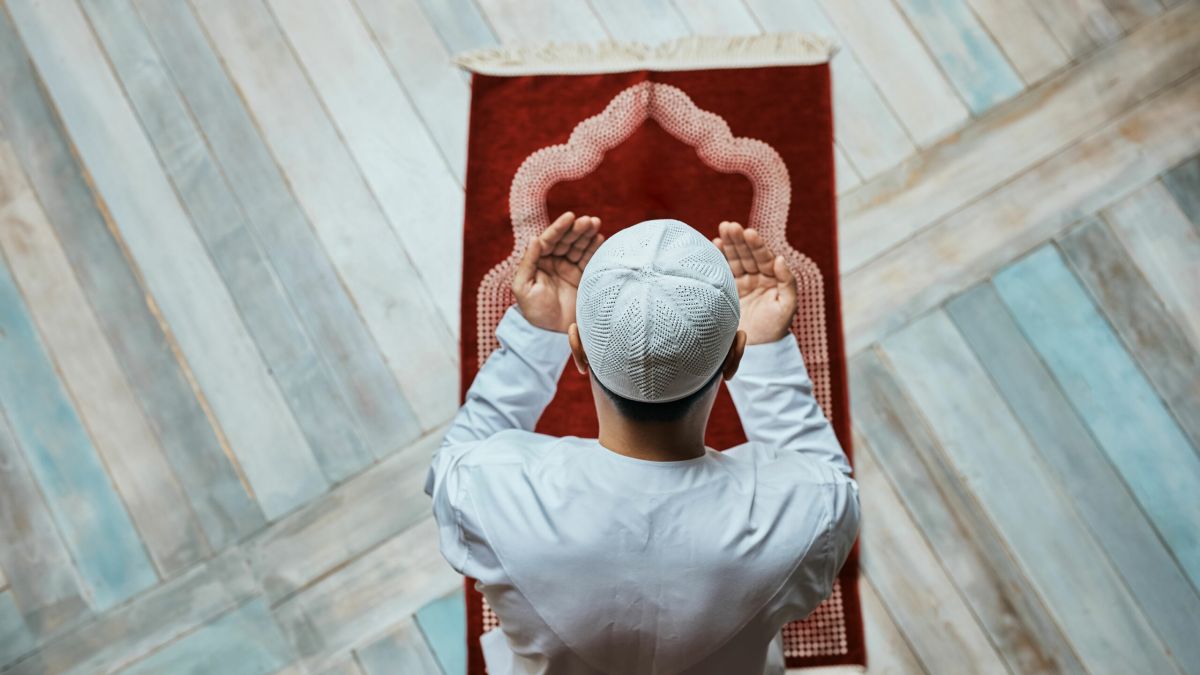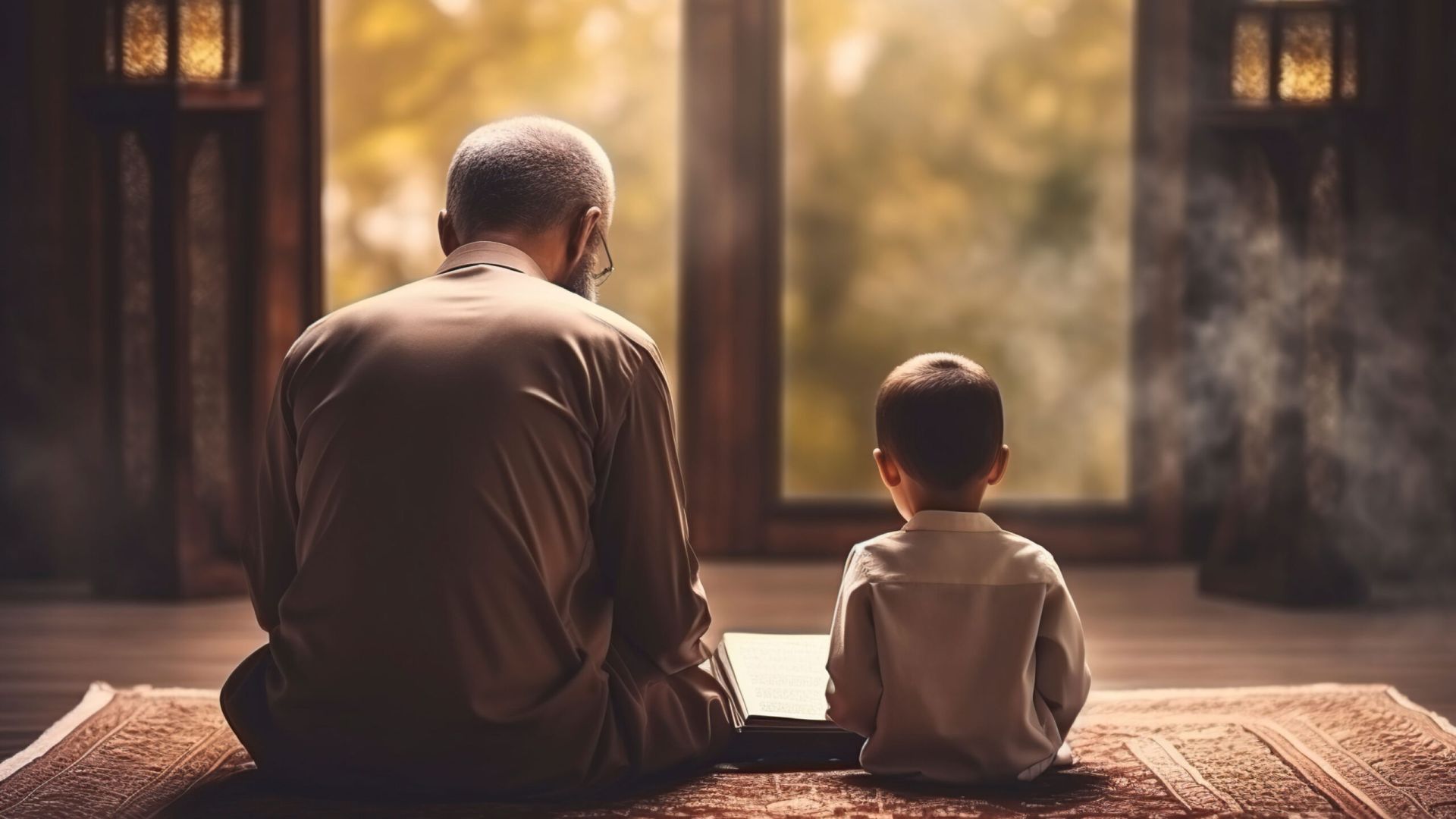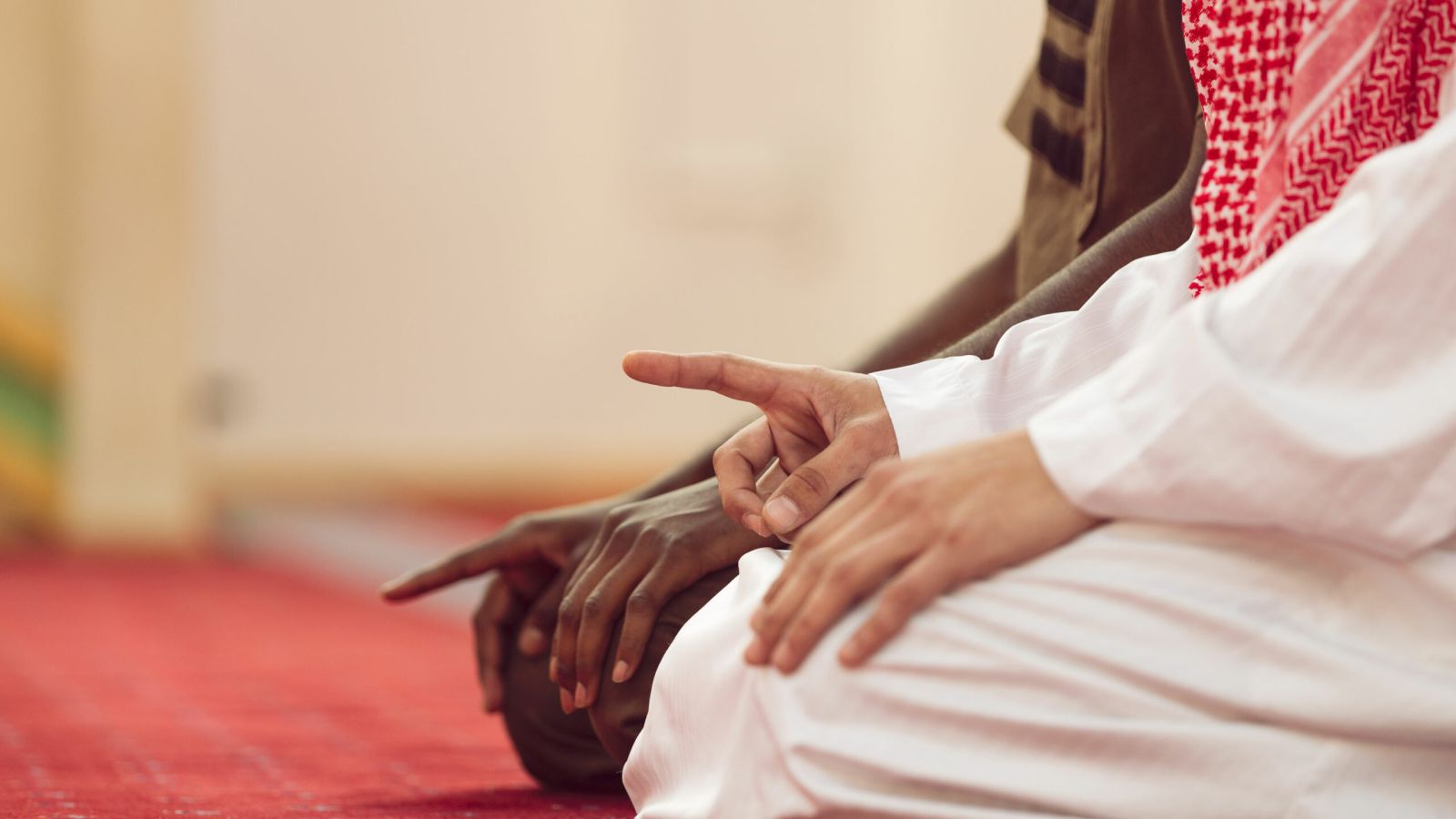The ʿAwrah of Men and Women Inside and Outside of Ṣalāh
Imām Muḥammad ibn Ṣāliḥ al-ʿUthaymīn


The Three Categories of ʿAwrah [Legislative Private Area]
What is considered al-ʿawrah which must be covered in ṣālāh is divided into three categories according to the Ḥanbalī madh`hab.:
- Males, 7-10 yrs old: The least stringent: is the ʿawrah of a male between the ages of seven and ten, which is just the genitalia. That is, as long as he has covered his private parts from the front and back, then he is considered to have covered himself, even if his thighs are visible.
- Females who have reached puberty: The most stringent: is the ʿawrah of a woman over the age of puberty. Her entire body is considered ʿawrah except for her face which does not need to be covered in ṣalāh. Although, it can be considered to be ʿawrah in terms of (men) gazing upon her. Please note that we are forced to use the term ‘ʿawrah’ here [in the context of looking upon her], even though we are speaking about what needs to be covered specifically in ṣalāh. If a woman was to pray in her home by herself, she would only need to cover everything except for her face.
- Everyone Else: Applies to everyone except for the two aforementioned classes. Its boundaries are the parts of the body from the navel to the knees. This boundary applies to males over the age of ten and to any girl below the age of puberty.1
Understanding “From the Navel to the Knee”
Regarding our saying “from the navel to the knee”, it is well-known that usually the start of any boundary, if mentioned, is included within the limits while the end limit is not. For example, if you were to say: Your land is from here to here [ownership would start from the place indicated in the start and continue until just before the other location]. Considering this, the navel is considered part of the ʿawrah of this category, as it represents the start of the boundary, so it must be covered. While the knees themselves are not included. However, there are several opinions in this issue:
- The boundary is inclusive of the knees and so must be covered.
- The boundary is inclusive of both the navel and the knees, so both must be covered.
- The most famous opinion of the Ḥanbalī madh`hab: The navel and the knees themselves are not included within the boundary. Considering this, they define the boundary more specifically by saying: “what is between the navel to the knees [rather than ‘from the..’].
The ʿAwrah of a Woman in Ṣalāh
As for a woman who has reached puberty covering her entire body except for her face, there is no clear evidence in this issue. For this reason, Shaykh al-Islām Ibn Taymiyyah (رحمه الله) has adopted the stance that the ʿawrah of any woman over the age of puberty is inclusive of everything except that which is apparent from her body while she is in the house which is: her face, hands, and feet. He said: The women at the time of the Messenger (صلى الله عليه وسلم) used to wear dresses, not two pieces of clothing at once. For this reason, if the blood of menstruation would mar their clothing, they would immediately clean it and pray in it. Considering this, their feet and hands are not considered ʿawrah in ṣalāh, but would be considered ʿawrah when looking upon them.
Based on the fact that there is no evidence in this issue with which one may find comfort, I have chosen to adopt the opinion of Shaykh al-Islām. Moreover, I say: This is most apparent, even if I do not adopt this stance with full and absolute certainty. This is because even if a woman were to wear a long dress which drags on the floor, the bottoms of her feet will still be visible when she performs sujūd. However, according to the Ḥanbalī madh`hab, she must cover her hands and feet, only exposing her face. The boundaries of the face here are the same as its dimensions when performing wuḍūʾ. That is: lengthwise from the upper curve of the forehead [or the anatomical start of hair growth] until the bottom of the jawbone. Its width from ear to ear. Based on this definition, she must avoid exposing any part of her hair, as it is in attachment to that which should be covered [as it is not part of the face]. Although, Ibn Rajab [al-Ḥanbalī] alluded, in the second rule of fiqh, that there is a difference of opinion in this issue. Among their [Ḥanbalī] jurists are those who view the hair of her head to be a part of her face while others view it as separate.
The ʿAwrah of Women Outside of Ṣalāh
As for “looking upon her”, the inherent intent in covering is to completely block the avenues towards tribulation and discord. She must, therefore, cover her face in front of men who are not from among her maḥarim. Among those who have adopted this opinion is Shaykh al-Islām who also has the stance that she must cover her hands and feet based on the same reasoning of avoidance of trials and discord. This covering is different to the covering that is incumbent in ṣalāh. As the purpose in ṣalāh is to adorn oneself [for prayer, not necessarily to protect from trials and discord, especially if she is praying alone in her home].
The ʿAwrah of Men in Ṣalāh
As for the ʿawrah of a man being from the navel to the knee, there is another narration from Imām Aḥmad as well, that the ʿawrah of a man is inclusive of his genitalia only. The apparent implication of this narration is that there is no difference between ṣalāh and gazing upon him (i.e. outside of ṣalāh). That is, he may pray as long as his two private parts are covered. However, Shaykh al-Islām has rejected this stance, saying: ‘In ṣalāh, it is most unbefitting that there should be any difference of opinion regarding the obligatory nature of a man covering his thighs.’ As for what people are able to see, this is another matter entirely.
What Shaykh al-Islām has postulated is the only correct opinion. It is for this reason that if the companions only had short garments, they would tie them over their shoulders such that it would not fall down. This proves that the companions viewed covering what is between the navel to the knees to be obligatory in ṣalāh, even if one was to say that the thighs are not considered part of a man’s ʿawrah. The opinion of Shaykh al-Islām is correct. For this reason, the Messenger (صلى الله عليه وسلم) said: “If your garment is narrow, then use it to wrap your lower body”2, and he (صلى الله عليه وسلم) also said: “Let not one of you pray in a single garment that does not lie on his shoulders”.3
The ʿAwrah of a Male in Ṣalāh Is Different to What Should be Covered Outside of Ṣalāh
The issue of what is covered in ṣalāh is completely unrelated to the issue of what is permissible to be observed from a man’s body. To clarify this, if a man is alone with his wife, he may look at her entire body just as she may look at all of his. However, if she was to pray in front of him only, she would still have to cover her entire body just as he would have to cover himself properly to pray, even if it was only in front of her.
Based on this we say: Men must cover their thighs when praying as this is the very least amount of covering that would stipulate the taking of adornments mentioned when Allāh says:
يَا بَنِي آدَمَ خُذُوا زِينَتَكُمْ عِندَ كُلِّ مَسْجِدٍ
“O Children of Ādam! Take your adornment (by wearing your clean clothes), while praying.”
(Al-Aʿrāf, 7:31)
The ʿAwrah of a Man in General (Outside of Ṣalāh)
As for parts of a man’s body that another may look upon, the intent with regards to it must be blocking the avenues that lead to tribulation and discord. Looking at that which is located right beside a man’s genitalia should adopt the same ruling as looking at his actual private parts. That is, the upper part of his thighs specifically should adopt this ruling. As for the flesh of the thighs below this, it is most apparent from the passages of the Sunnah that it is not from a man’s ʿawrah as far as being observed by others. As it was confirmed that the Prophet (صلى الله عليه وسلم) ‘s thigh was once exposed4 while he (صلى الله عليه وسلم) is the most chaste of all people.
Despite this, as far as young men are concerned, it is my opinion that they must completely cover their entire thighs and everything that is below their navel. This is as a precaution against the occurrence of tribulation and discord. Do not say: There is no such trial or discord present as a result of such exposure because males are not troubled in this way by other males like themselves. Such a statement is incorrect, just as it is contrary to reality. Among the people are definitely those who are trialled in this way as a result of gazing upon young men. Even if he himself is a male. While others barely notice such matters as, for them, all young men are perceived as one of their children. For this reason, they are unable to derive any sort of sexual enticement from gazing upon them. Among the people are those— whom Allāh has informed us—pursue men lustfully and, in doing so, resort to the dirtiest and most abhorrent place on the body—we seek refuge in Allāh. They completely abandon the wives which Allāh has created for them—even if they are among the most beautiful women. Shaykh al-Islām says: It is ḥarām to look upon them—that is, young men whom, by gazing upon them, one fears the occurrence of tribulation and discord —for any person who derives sexual enjoyment or lust from seeing them. This is because this represents evil. As Imām Aḥmad said: How many mere glances have caused apprehension, anxiety, and disquiet to plague the heart of the onlooker?
Endnotes:
[1] Translator note: “girls below the age of puberty”: That is, from the age of seven until puberty. There is no ʿawrah that applies to girls below the age of seven. Shaykh Muḥammad ibn Ibrāhīm Āli al-Shaykh said: “If an infant girl is young—having not reached the age of seven—there is no ʿawrah that applies to her. She will have an ʿawrah once she reaches the age of seven as the jurists have explicitly stated. Even if, at the age of seven [until puberty], her ʿawrah is different to the ʿawrah of a much older woman.” See Fatāwá al-Ṭibb wa al-Marḍá: 218
[2] Authentic: narrated by al-Bukhārī: 361.
[3] Authentic: narrated by al-Bukhārī: 359 and Muslim: 516.
[4] Authentic: narrated by al-Bukhārī: 371 and Muslim: 1365.
Source: Al-Sharḥ al-Mumtiʿ 2:156-164
Translated by: Riyāḍ al-Kanadī
Most Popular: Last 30 Days

















